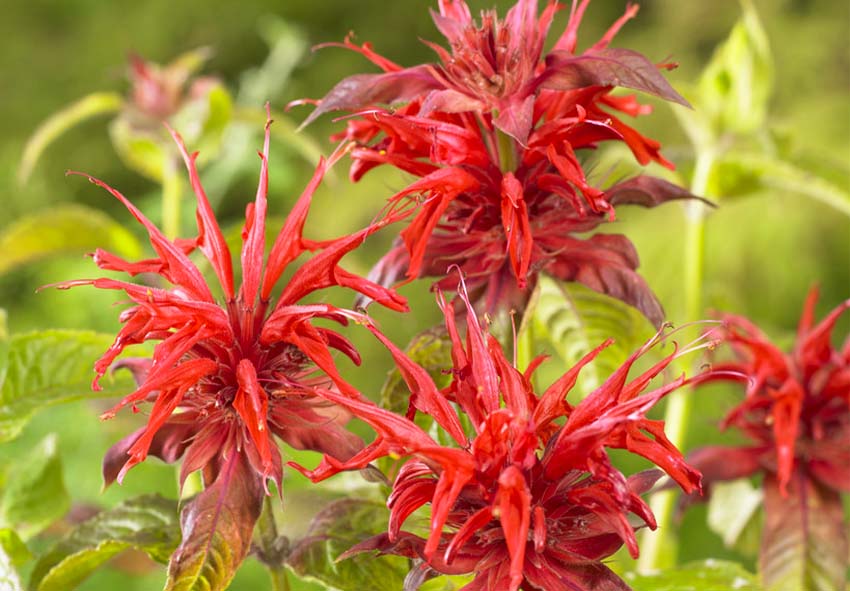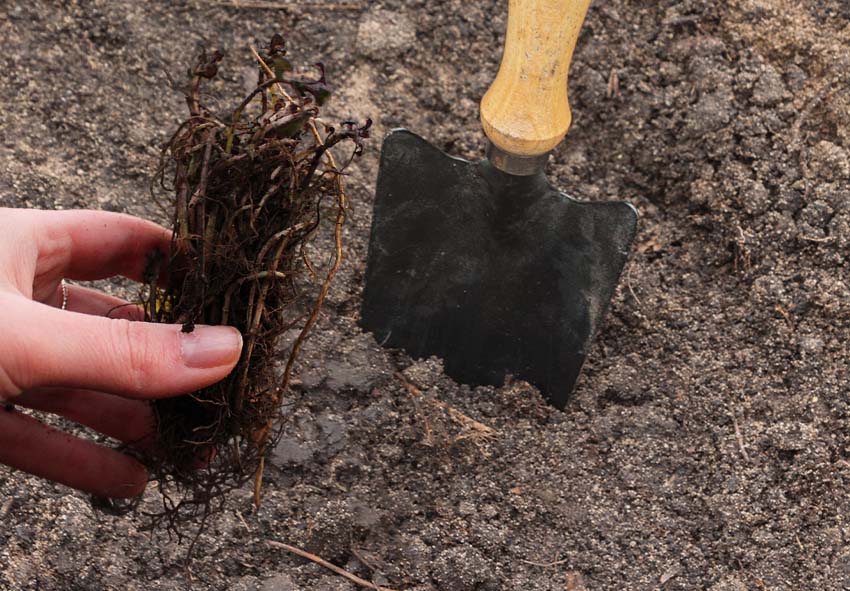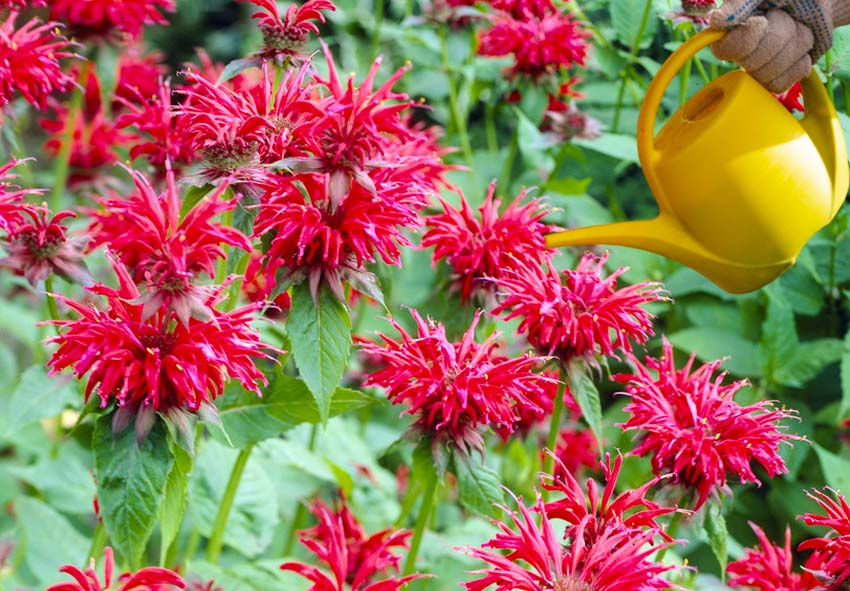Monarda, commonly known as bee balm, is a beloved plant in gardens due to its vibrant flowers and ability to attract pollinators like bees and hummingbirds. Known for its striking red, pink, and purple blooms, Monarda not only adds aesthetic value but also promotes a healthy ecosystem. Proper planting and care are crucial for ensuring robust growth and plentiful flowering, making it essential to understand the specific needs of this versatile plant. Our gardening blog is a perfect place to find all the information you need!
Preparing to Plant Monarda

Before planting Monarda, also known as bee balm, it’s important to prepare your garden space to meet the plant’s needs. This involves selecting an appropriate location that provides adequate sunlight and preparing the soil to support healthy growth. Proper preparation will set the stage for your Monarda plants to thrive, offering vibrant blooms and attracting beneficial pollinators.
Choosing the Right Location
Selecting the right location for planting Monarda is vital for its successful growth. Here are some tips for you:
- Sunlight Requirements: Monarda thrives in full sun, requiring at least 6 hours of direct sunlight per day. In hotter climates, providing afternoon shade can help prevent leaf scorch.
- Space Considerations: Ensure enough space for air circulation around the plants to reduce the risk of fungal diseases. Depending on the variety, Monarda plants can grow 2 to 4 feet tall and spread 1 to 3 feet wide.
- Soil Drainage: Choose a location with well-draining soil to prevent root rot. If the garden area tends to retain water, consider amending the soil or planting on a slight mound.
- Proximity to Pollinators: Plant Monarda near other pollinator-friendly plants to create a vibrant and attractive environment for bees, butterflies, and hummingbirds.
- Wind Protection: While Monarda is generally sturdy, planting in a location sheltered from strong winds can help protect the tall stems and delicate flowers.
- Accessibility: Choose a location that is easy to access for regular watering, pruning, and maintenance to ensure consistent care and monitoring.
Best Soil for Monarda
Monarda prefers well-draining soil that is rich in organic matter. The ideal soil pH for Monarda ranges from slightly acidic to neutral, around 6.0 to 7.0. To improve soil quality and drainage, consider amending the planting area with compost or well-rotted manure. This not only enhances soil structure but also provides essential nutrients that support healthy growth. In areas with heavy clay soil, adding sand or perlite can improve drainage and prevent waterlogging, which Monarda roots are sensitive to.
Planting Monarda

Planting Monarda can be done either by sowing seeds or transplanting nursery-grown plants. The timing and method of planting are crucial for successful establishment. By understanding when and how to plant Monarda, you can ensure a robust start for your garden, leading to a flourishing display of flowers throughout the growing season. More useful information about planting can be found in our full guide for Monarda.
When to Plant
The best time to plant Monarda is in the spring, after the last frost has passed, and the soil has warmed. This timing allows the plants to establish their root systems before the onset of hot summer weather. In milder climates, Monarda can also be planted in the fall, giving the plants a head start in the growing season.
How to Plant Monarda Seeds and Transplants
When it comes to establishing Monarda, also known as bee balm, in your garden, choosing between seeds and transplants can influence the growth and flowering of the plants. Each method has its unique steps and considerations to ensure healthy development. Whether you’re starting from seeds or using young transplants, following the correct planting techniques is crucial for a successful and vibrant display.
Starting Monarda from seeds allows you to grow a wide variety of species and cultivars. This method requires patience and attention to detail, especially since the seeds are small and need light to germinate. By following these steps, you can successfully sow and nurture Monarda seeds, leading to a colorful and pollinator-friendly garden:
- Timing: Sow seeds in early spring after the last frost or in late fall for natural stratification.
- Soil Preparation: Loosen the soil and remove any weeds or debris.
- Sowing: Scatter seeds thinly over the soil surface; do not cover with soil as they need light to germinate.
- Watering: Gently water the area to moisten the soil without displacing the seeds.
- Spacing: Once seedlings emerge and grow to a manageable size, thin them out to ensure they are spaced 18-24 inches apart.
Using transplants is a quicker way to enjoy Monarda’s beautiful blooms in your garden. This method involves planting nursery-grown seedlings, which can establish faster and bloom sooner compared to seeds. Proper handling and planting of transplants are essential to minimize transplant shock and ensure the plants thrive in their new environment:
- Timing: Plant transplants in the spring after the danger of frost has passed or in the fall in milder climates.
- Site Preparation: Dig a hole twice the width of the transplant’s root ball.
- Planting Depth: Place the transplant in the hole at the same depth it was growing in the pot.
- Backfill and Firm: Fill the hole with soil, gently pressing around the base of the plant to eliminate air pockets.
- Watering: Water thoroughly after planting to settle the soil and ensure the roots are well-hydrated.
Caring for Monarda

Once planted, Monarda requires consistent care to maintain its health and vibrancy. Key aspects of care include proper watering, fertilizing, and mulching, which help support growth and flowering. Regular maintenance not only keeps the plants looking their best but also helps prevent common issues like pests and diseases.
Watering Requirements
Monarda requires consistent moisture, especially during its establishment phase. Water the plants deeply once or twice a week, ensuring the soil is kept moist but not waterlogged. During periods of drought or extreme heat, more frequent watering may be necessary. To maintain soil moisture and reduce the need for watering, consider using mulch around the base of the plants.
Fertilizing Monarda
Fertilization helps Monarda achieve its full potential in terms of bloom and foliage health. Follow main instructions to achieve the best results:
- Choose the Right Fertilizer: Use a balanced, slow-release fertilizer with an N-P-K ratio such as 10-10-10. Organic options like compost, fish emulsion, or well-rotted manure are also excellent choices
- .Timing: Apply fertilizer in early spring as new growth begins. This timing supports the initial growth phase and prepares the plants for a strong blooming season.
- Application Method: Spread the fertilizer evenly around the base of the plants, keeping it a few inches away from the stems to prevent root burn. For liquid fertilizers, follow the manufacturer’s instructions for dilution and application.
- Mid-Season Boost: If growth slows or foliage appears yellow, a mid-season application of a balanced or low-nitrogen fertilizer can revitalize the plants.
- Watering After Fertilizing: Always water the plants thoroughly after applying fertilizer to help distribute nutrients and prevent root burn.
- Soil Testing: Conduct a soil test before fertilizing to determine existing nutrient levels. Adjust the type and amount of fertilizer based on the test results to avoid over-fertilization and to meet the specific needs of your soil.
Mulching and Weed Control
Mulching is beneficial for Monarda as it helps retain soil moisture, suppress weeds, and maintain a stable soil temperature. Use organic mulch, such as straw, shredded bark, or leaves, applying a 2-3 inch layer around the plants, keeping it away from the stems to prevent rot. Regular weeding is also important to reduce competition for nutrients and water.
Conclusion
Growing Monarda is a rewarding experience that adds color and life to any garden. By following proper planting techniques and providing consistent care, you can enjoy the beauty and benefits of this stunning plant. Whether you’re planting Monarda to attract pollinators or for its fragrant blooms, it’s a delightful addition to any landscape.
Frequently Asked Questions (FAQs) about Planting Monarda
1. What is the best time of year to plant Monarda?
The ideal time to plant Monarda, or bee balm, is in early spring after the last frost, allowing the plants to establish before the heat of summer. In milder climates, planting can also be done in the fall, giving the plants a head start for the following growing season.
2. How much sunlight does Monarda need?
Monarda thrives in full sun, requiring at least 6 hours of direct sunlight per day. In hotter climates, some afternoon shade can be beneficial to prevent leaf scorching and ensure the plants remain healthy.
3. What type of soil is best for Monarda?
Monarda prefers well-draining soil rich in organic matter. The ideal soil pH ranges from slightly acidic to neutral (6.0 to 7.0). Adding compost or well-rotted manure can improve soil structure and fertility, supporting robust growth.
4. How often should Monarda be watered?
Monarda requires consistent moisture, especially during its initial growth phase. Water deeply once or twice a week, adjusting frequency based on rainfall and temperature. Avoid letting the soil dry out completely, but also ensure good drainage to prevent waterlogging.
5. Can Monarda bulbs be ordered from your online store?
Yes! If you’re interested in adding Monarda to your garden, our online store Dutch-bulbs.com offers a selection of high-quality seeds and young plants. Please visit our website to explore our current Monarda offerings and place an order for the best option that suits your gardening needs.
Published: 24.07.2024
